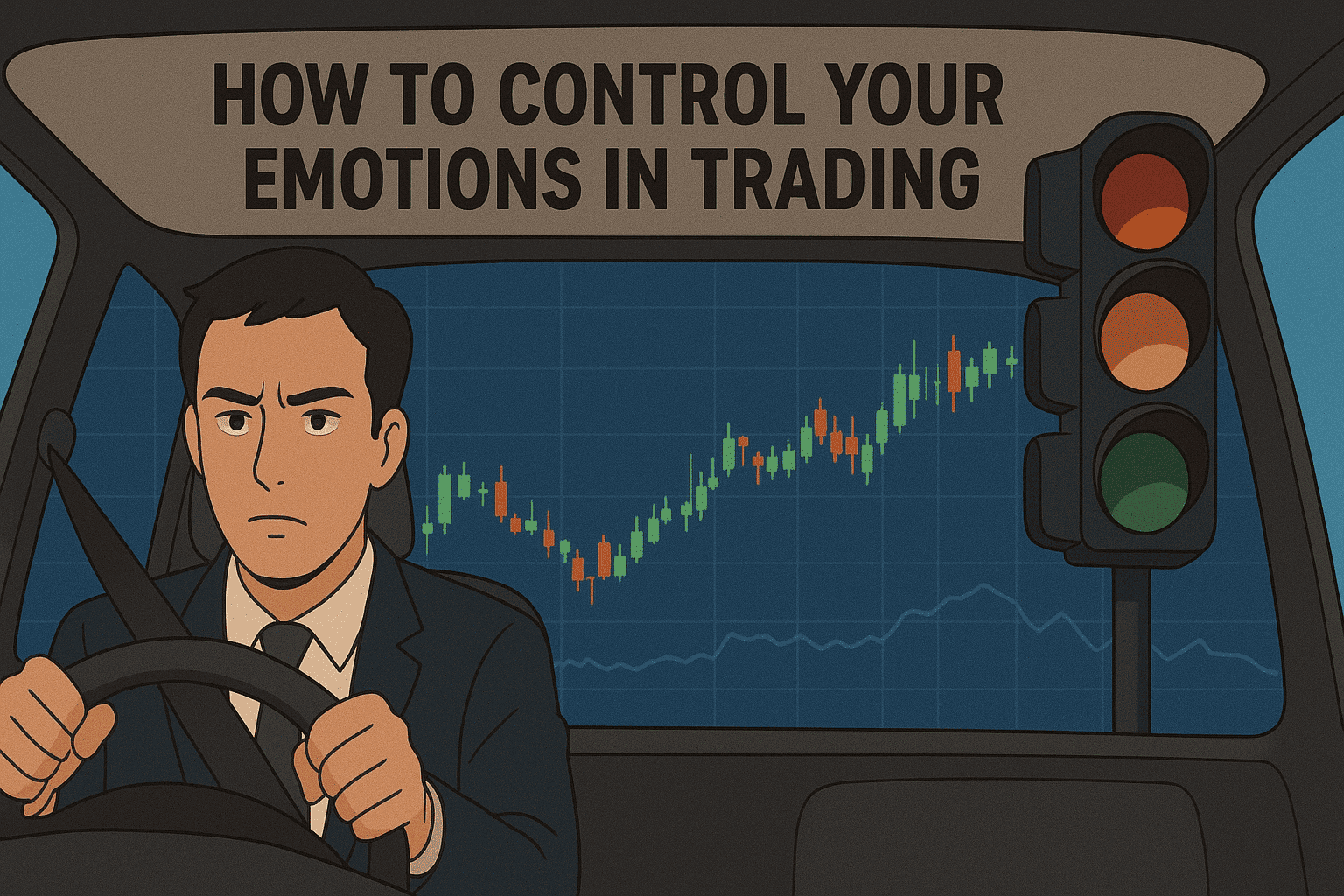Trading isn’t about shutting off emotions; it’s about handling them with discipline. Think of it like driving through a busy city: the road is unpredictable, traffic lights control your flow, and one wrong turn can cost you. So, here’s the question: how to control your emotions in trading?
Well, if you consider the market, the same as driving your car on the road, it will help you understand better.
In simple terms, if you floor the accelerator after a loss, ignore signals, or swerve without checking, you’ll crash your P&L.
But with the right habits, you can drive calmly, hit fewer bumps, and reach your destination safely.
How to Control Your Emotions While Stock Trading?
On the road, you don’t control the lights or other drivers, only your own vehicle. In trading, you can’t control the market, only your own decisions.
So, just like you follow traffic signals on the road, you need to follow the same rules in your trading as well.
- Green lights: Opportunities. They tell you when to move, but rushing through without looking both ways can still end badly.
- Red lights: Losses. They force you to pause, reset, and avoid reckless moves.
- Yellow lights: Warnings. Maybe a setup looks tempting, but it doesn’t fit your plan. Slow down, and no need to gamble at the intersection.
Good drivers aren’t faster, they’re safer. And safe trading means lasting long enough to compound your wins.
Why Emotions Take Over
When you trade, your brain fires the same stress chemicals it does in real-world danger:
- Fear makes you brake too early, cutting winners short.
- Greed makes you speed, risking too much too fast.
- Frustration makes you U-turn, chasing losses with revenge trades.
Just like ignoring road signs leads to accidents, ignoring emotional signals leads to blown accounts.
Here are some common traffic jams in trading:
- FOMO Green Lights: Entering just because “everyone else is moving.”
- Overconfidence Speeding: Oversizing after a winning streak.
- Revenge U-turns: Forcing trades to erase a loss.
- Fatigue Traffic: Trading all day until judgment slows.
Knowing these traps is like spotting potholes before your tire bursts.
Rules of the Trading for Traders
- Set Trade Limits
Decide your maximum daily loss and number of trades before you even open your platform. Example: 5 trades max or –2R for the day. Once you hit it, stop. Just like speeding tickets, breaking this rule only gets costlier the longer you ignore it. - Plan Your Trade
A driver doesn’t leave home without knowing the destination. Do the same with trading: mark PDH, PDL, VWAP, and your key zones before the open. This keeps you from “swerving” into random setups. - Respect Red Lights
Losses are red lights. Instead of flooring it into the next trade, pause for 5–10 minutes. That short break resets your emotions and prevents the chain reaction of revenge trades. - Keep a Trading Log
Every trip has patterns — so does your trading. Journal your entries, exits, emotions, and whether you followed your plan. Reviewing it weekly helps you spot recurring “accident zones” like overtrading after a loss or cutting winners too early. - Downshift When Needed
When traffic gets heavy, drivers slow down. Do the same when your head isn’t clear, reduce your position size. Smaller trades carry smaller emotional weight, giving you time to regain focus before sizing back up.
Benefits of Controlling Emotions in Trading
Still thinking why trading psychology is important and what impact does managing emotions bring in your trade?
Well, here are some of the key benefits:
- Better setups: You wait for true signals instead of chasing noise.
- Consistency: No more boom-and-bust cycles.
- Confidence: Trust in your process, not impulses.
It’s not about driving faster — it’s about reaching the destination without wrecking your account.
Want to build a strong trading psychology? Join the stock market mentorship program and get expert guidance now and learn how to trade more logically rather than emotionally.
Final Thoughts
The market will always throw red lights, yellow warnings, and sudden detours. The traders who last aren’t the ones who never feel fear or greed — they’re the ones who respect the signals, pause when they should, and accelerate only when the path is clear.
If emotional trading has been wrecking your journey, it’s time to drive with discipline — not adrenaline.
Before investing capital, invest your time in learning Stock Market.
Fill in the basic details below and a callback will be arranged for more information:




